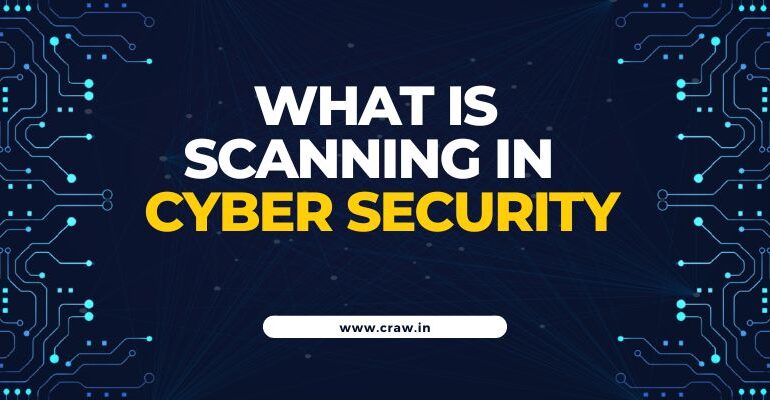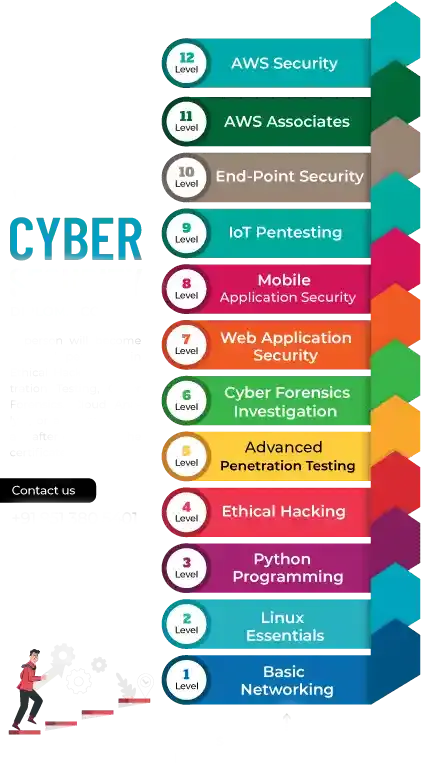What Is Scanning In Cyber Security: A Comprehensive Guide

What Is Scanning In Cyber Security: A Comprehensive Guide
Knowing the basics of cyber security is essential in today’s linked world, when digital risks are everywhere. Scanning is a crucial part of protecting your digital assets. But what does scanning in cyber security actually mean? How does it help to protect your online presence? We’ll go deep into scanning in this complete tutorial, looking at its definition, processes, tools, and best practices. By the conclusion, you’ll be well-versed about scanning’s place in cyber security and how it helps you bolster your defenses against bad actors.
What is Scanning In Cyber Security?
In terms of cyber security, scanning is the methodical process of inspecting systems, applications, and networks to find any potential flaws, incorrect setups, or vulnerabilities. It entails using a variety of methods and tools to examine and probe the intended infrastructure in search of weaknesses that attackers might exploit. Companies can proactively identify and reduce security risks by carrying outscans, assuring the protection of their digital assets.
The Importance of Scanning in Cyber Security
In light of emerging cyber threats, it is crucial to ensure the protection of your digital assets. Here are some reasons why scanning is essential to cyber security:
| Identifying Vulnerabilities | Companies can find network and system flaws and vulnerabilities through scanning. Businesses may prioritize their efforts to improve their security posture by knowing their vulnerabilities. |
| Assessing Risks | The infrastructure of an organization can potentially be exposed to risks and hazards through scanning. Using this data, security teams may evaluate the probability and consequences of these risks, allowing them to invest resources wisely. |
| Preventing Exploitation | Enterprises can effectively patch weaknesses by finding them through scanning before bad actors can make use of them. This decreases the possibility of effective cyberattacks. |
| Compliance Requirements | Regular scanning is necessary to guarantee compliance with many regulatory frameworks and norms, including the General Data Protection Regulation (GDPR) and the Payment Card Industry Data Security Standard (PCI DSS). Serious penalties could be imposed if these rules are not followed. |
Types of Scanning
In cyber security, a variety of scanning techniques are employed. Let’s look at a few of the most typical ones:
- Port Scanning
Port scanning includes checking the status of each port on the system of interest to see if it is open, closed, or filtered. It assists in identifying the services and apps that are active on the intended system, potentially disclosing flaws or incorrect setups.
- Vulnerability Scanning
The goal of vulnerability scanning is to find applications, systems, and network flaws. It compares the target infrastructure to a catalog of known vulnerabilities to identify places that need quick care.
- Network Scanning
Network mapping and analysis are used in network scanning to locate hosts, devices, and other elements of a network. It gives a description of the network’s architecture and aids in locating potential points of entry for attackers.
- Web Application Scanning
Finding web application-specific vulnerabilities like SQL injection, cross-site scripting (XSS), or unsafe direct object references is the goal of web application scanning. Organizations may make certain their online interfaces are safe and devoid of vulnerabilities by scanning web apps.
- Malware Scanning
Malware scanning is a key component of cybersecurity and is essential for identifying and reducing threats from malicious software. Viruses, worms, Trojan horses, ransomware, spyware, and adware are just a few examples of dangerous software referred to as malware, sometimes known as malicious software. To detect and eliminate any possible threats and maintain the safety and soundness of your digital setting, it is crucial to run routine malware scans on your devices and systems.
Scanning Tools and Techniques
There are several scanning tools and methodologies available to carry out efficient scans and find vulnerabilities. Let’s examine some well-known examples:
1. OpenVAS
An effective open-source vulnerability scanner called OpenVAS (Open Vulnerability Assessment System) aids businesses in locating and evaluating the weaknesses in their networks and systems. It is frequently employed in the cybersecurity sector and offers a complete set of scanning capabilities.
2. Nessus
A well-known commercial vulnerability detection tool called Nessus provides a number of functions to evaluate network and system vulnerabilities. To assist businesses in fixing vulnerabilities, it regularly refreshes its vulnerability list and gives thorough reports.
3. Nmap
The network scanning tool Nmap (Network Mapper) is flexible and reliable. On their networks, it enables businesses to find hosts, services, and open ports. Nmap provides a command-line interface with a wide range of parameters to personalize scans to meet particular needs.
4. Burp Suite
A scanner for finding online application vulnerabilities is part of the well-known web application testing tool Burp Suite. It may automatically examine web applications for typical security flaws and generate thorough reports with suggested fixes.
5. Wireshark
A popular network protocol analyzer that records and examines network traffic is called Wireshark. It aids security experts in comprehending how devices communicate on a network, spotting suspicious activity, and locating potential security flaws.
Best Practices for Scanning in Cyber Security
It’s critical to adhere to the best standards to increase scanning activities’ efficacy and guarantee accurate results. In addition, the following are some essential principles to bear in mind:
- Define Scanning Scope: The target systems, networks, and applications should all be included in a clear definition of the extent of your searches. This prevents needless resource use and guarantees that scans are carried out on the targeted resources.
- Obtain Proper Authorization: Always get the appropriate permission before performing scans. Without authorization, scanning is prohibited and could have legal repercussions.
- Keep Scanning Tools Updated: To make sure they can find the most recent vulnerabilities, frequently update your scanning tools and vulnerability databases. Older tools may overlook important security vulnerabilities.
- Schedule Regular Scans: Establish an ongoing scanning schedule to check your systems for vulnerabilities continuously. This aids in the prompt identification and mitigation of security risks.
- Analyze Scan Results Thoroughly: Review scan results thoroughly, then order vulnerabilities by severity. To reduce the greatest risks, concentrate initially on correcting significant vulnerabilities.
- Document Findings and Remediation Steps: Keep thorough records of scan results and the actions taken to fix vulnerabilities. This facilitates tracking of progress and guarantees uniform security procedures.
Frequently Asked Questions (FAQs)
About What is Scanning in Cyber Security?
1: What is the difference between vulnerability scanning and penetration testing?
In general, vulnerability scanning provides a broad assessment of known vulnerabilities, while penetration testing simulates real-world attacks to exploit vulnerabilities and assess the overall security stance actively.
2: How often should scanning be performed?
The amount of change occurring within the structures, the rate of change in the surroundings, the level of risk tolerance, and any regulatory or legal obligations all affect how frequently vulnerabilities are scanned.
3: Can scanning disrupt network or system operations?
Vulnerability scanning has the potential to cause disruptions in network or system operations, although the extent of disruption can vary depending on several factors:
- Network and System Load
- False Positives
- Scanning Techniques
- Misconfiguration or Vulnerability Exploitation
However, it is advised to implement the below-mentioned instructions to mitigate disruptions during vulnerability scanning:
- To have the least amount of influence on operations, organize scans for times when there is less network or system traffic.
- Set scanning tool limitations and rates appropriately to prevent over-scanning of the intended systems.
- Work together with IT teams or system administrators to make certain scanning efforts are well-organized and notified to prevent disruptions.
- Before implementing any repair measures, thoroughly test and validate the reported vulnerabilities to prevent false positives and unexpected disruptions.
- To reduce the possibility of disruptive scanning activity, adhere to the best practices and recommendations given by the seller of the scanning instrument or security specialists.
4: Can scanning guarantee complete security?
No, vulnerability screening by itself is unable to ensure total security. Vulnerability scanning is a crucial security procedure that aids in locating loopholes, incorrect setups, or identified weaknesses in networks and systems. It is only one part of a larger security plan, though.
5: Can scanning cause false positives?
Yes, false positives can result from vulnerability scanning. False positives happen when a flaw is flagged as a security hole by a vulnerability scanning tool, but further analysis reveals that the reported issue is not a real security vulnerability or does not pose a serious risk to the system or network.
6: Is it necessary to hire external experts for scanning?
The organization’s assets, experience, and particular needs all play a role in the decision to hire outside consultants for vulnerability scanning. While internal vulnerability assessment is viable, there are a number of reasons why businesses could decide to hire outside consultants instead:
- Specialized Skills and Knowledge,
- Objectivity and Fresh Perspective,
- Advanced Tools and Techniques,
- Compliance and Audit Requirements,
- Resource and Time Constraints, etc.
Conclusion
In a nutshell, we would like to state that we have tried our best to deliver crucial knowledge factors related to showcasing what Scanning In Cyber Security is. In this regard, a person can employ world-class VAPT Services in India by Craw Security, which offers the best penetration testing services in India through its most skilled and experienced penetration testers. For more info, you can give us a call back at +91-9513805401 and ask for a quote for an all-around cyber security upgrade for your organization.














